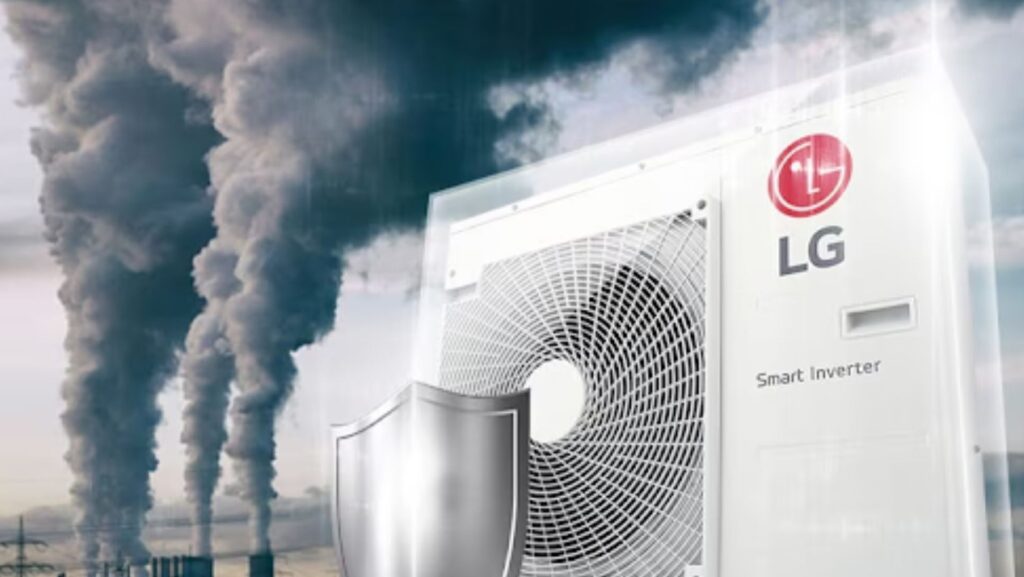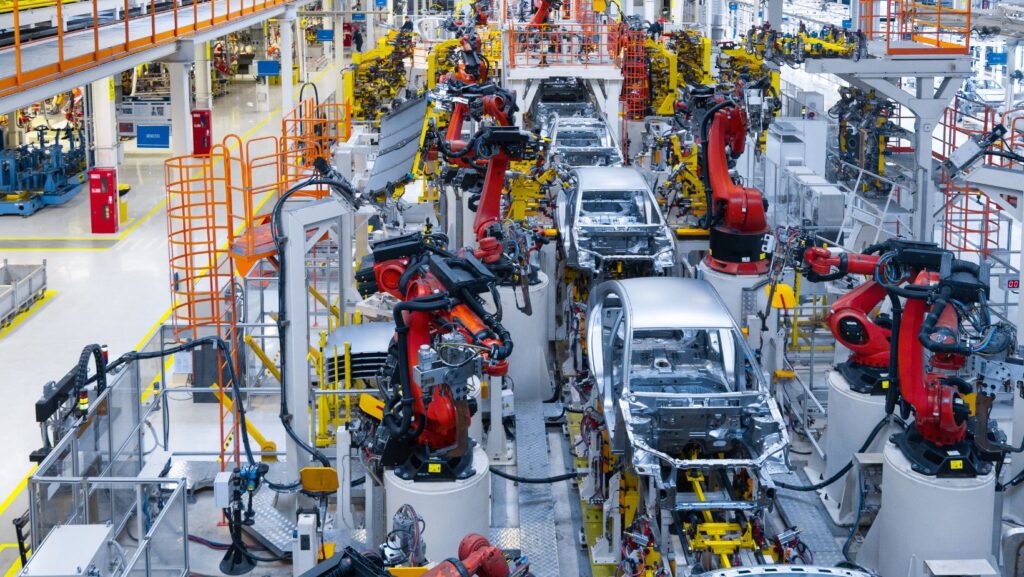Commercial air conditioning systems are integral to maintaining a comfortable and productive environment in various settings, such as offices, retail spaces, educational institutions, and large industrial facilities. Unlike residential units, which typically cater to the cooling needs of smaller spaces, commercial systems are designed to handle the more significant demands of larger areas with complex cooling requirements.
These systems not only regulate the temperature within a space but also maintain optimal humidity levels and air quality, contributing to the overall well-being of occupants and preservation of equipment and goods. The essential purpose is to provide a consistent and controlled climate that can be adjusted according to the specific needs of each commercial space.
To accommodate diverse environments, commercial air conditioning units come in various sizes and configurations, often involving intricate installations that integrate seamlessly with a building’s architecture. Such systems can include expansive networks of ducts, large-scale outdoor units and complex control mechanisms that allow for zoned cooling and advanced energy management. Commercial AC systems thus require detailed planning, installation, and regular maintenance to ensure they operate efficiently and effectively.
As businesses become more energy-conscious and look to reduce operational costs, the importance of selecting the right type of air conditioning system and ensuring it is properly maintained has become increasingly paramount. With these systems accounting for a significant portion of a building’s energy usage, a well-designed and efficiently operated commercial air conditioning system is not just a matter of comfort, but also a critical business consideration.
Types of Commercial AC Systems and Their Applications
10. Commercial air conditioning systems come in various types, each suited to different building sizes, layouts, and cooling requirements. The most common types include:
1. **Single Split Systems**: These are affordable and ideal for small commercial spaces like individual offices, small cafes, and shops. Each system consists of one indoor unit connected to an outdoor unit, allowing for individual control of temperatures in different spaces.
2. **Multi-Split Systems**: Similar to single splits, but multiple indoor units can be connected to a single outdoor unit. This setup is beneficial for businesses like restaurants or medium-sized offices that need to condition multiple spaces but have limited outdoor space for the equipment.
3. **VRF or VRV Systems**: Variable Refrigerant Flow (VRF) or Variable Refrigerant Volume (VRV) systems provide precise temperature control and are energy-efficient, making them suitable for large commercial buildings like hotels, office towers, and expansive retail spaces. These systems can also offer simultaneous heating and cooling in different zones.
4. **Packaged Central Air Systems**: These are large units that typically sit on the roof or on a concrete slab beside the building, combining the evaporator, condenser, and compressor in a single unit. They are used in larger buildings with extensive open spaces, such as warehouses or big box stores.
5. **Chillers**: Chiller systems are used in the largest commercial applications, like industrial facilities, hospitals, or shopping malls. They produce chilled water that is then circulated to air handling units (AHUs) or fan coil units (FCUs) to cool the indoor air.
Each system’s application largely depends on the building’s size, design, cooling requirements, and available installation space. Proper analysis of these factors ensures the deployment of an efficient and cost-effective system that meets the specific cooling needs of the commercial space.
Key Components of a Commercial AC System
Commercial air conditioning systems encompass a variety of components that work in harmony to provide efficient cooling to large spaces. At the core of these systems is the compressor, which serves as the “heart,” pumping refrigerant through the air conditioning circuit. It is responsible for increasing the refrigerant’s pressure, enabling it to transport heat effectively.
The condenser unit, typically located outside the building, plays the crucial role of expelling the absorbed heat into the environment. The refrigerant, condensed into a high-pressure liquid as it releases heat, travels to the evaporator coil. This essential component is found within the indoor air handling units and functions as the “lungs” of the system. Here, the refrigerant absorbs heat from the indoor air, thereby lowering the air’s temperature.
Another vital part is the expansion valve or device, which serves as a regulator, controlling the flow of refrigerant into the evaporator. By restricting the refrigerant, it creates a pressure drop, allowing the liquid refrigerant to expand, cool, and absorb heat during the evaporation process.
Air handlers and blowers are responsible for circulating conditioned air throughout the building, while filters clean the air by removing dust, allergens, and other pollutants. Moreover, the ductwork provides a pathway for the cooled air to travel across different areas of the building.
Finally, thermostats and control systems offer user interfaces and automation for maintaining the desired environmental conditions, while also conserving energy by modulating system operations based on demand. Collectively, these components ensure the reliability, efficiency, and performance of commercial air conditioning systems.
The Science Behind AC: Understanding the Cooling Process
At the heart of any commercial air conditioning system lies the principle of thermodynamics, which governs the transfer of heat. The basic science behind air conditioning is the removal of heat from indoor air and its release to the outdoor environment, resulting in cooler indoor temperatures. This process involves several key steps, orchestrated by the system’s main components.
The commercial AC system utilizes a refrigerant, which has the capacity to absorb heat and transform from a low-pressure gas to a high-pressure liquid during the cooling cycle. Initially, the refrigerant enters the compressor as a low-pressure, warm vapor. The compressor, as the name implies, compresses this vapor, raising its pressure and temperature. Now as a hot, high-pressure gas, the refrigerant flows into the condenser coil.

Here, through the condenser coil’s fins, the refrigerant releases its accumulated heat to the outside air. This is typically aided by fans that disperse the heat away from the unit. As the refrigerant loses heat, it condenses into a high-pressure liquid. It then moves to an expansion valve, which regulates the flow of refrigerant into the evaporator coil, allowing the liquid to expand and rapidly cool.
The refrigerant, now a cool, low-pressure liquid, enters the evaporator coil, where it absorbs heat from the indoor air blown over the coil. This absorption of heat cools the air while the refrigerant evaporates back into a low-pressure vapor, to repeat the cycle. The cold air is then distributed throughout the commercial space via ductwork or air handling systems, thus maintaining the desired indoor temperature.
Maintenance Tips for Efficient Commercial AC Performance
Proper maintenance is the linchpin for ensuring efficient performance and longevity of commercial air conditioning systems. Regularly scheduled check-ups can prevent costly breakdowns and reduce energy consumption, subsequently slashing utility bills. Here are essential tips to keep a commercial AC system running smoothly:
1. **Filter Replacement:** Dirty or clogged filters restrict airflow, causing the system to work harder and use more energy. Filters should be checked monthly and replaced as necessary to ensure optimum air quality and system efficiency.
2. **Coils Cleaning:** The evaporator and condenser coils can accumulate dust and debris over time, impairing the system’s ability to absorb and dissipate heat. Annual cleaning of these coils is imperative for maintaining efficiency and preventing mechanical issues.
3. **Check Refrigerant Levels:** Insufficient refrigerant can decrease the efficiency of the air conditioning system. Have a professional check the refrigerant levels and look for leaks, ensuring the system has the correct amount for optimal operation.
4. **Inspect Ductwork:** Leaks or blockages in ductwork can significantly diminish system performance. It’s essential to inspect ducts regularly for any signs of leaks, and to ensure they are sealed and insulated properly.
5. **Calibrate Thermostats:** Ensure that thermostats are accurately calibrated and functioning correctly. This can prevent the AC from running longer than necessary, thus conserving energy and reducing wear and tear on the system.
6. **Schedule Professional Maintenance:** Regular professional inspections can catch potential issues before they escalate into significant problems. A service contract with a reputable HVAC company will ensure your system undergoes professional check-ups and maintenance at proper intervals.
Adhering to a strict maintenance regime not only prolongs the life of a commercial AC system but also promotes a comfortable, healthy environment for the occupants of the space.
Selecting the Right Commercial AC System for Your Space
Choosing the right commercial air conditioning system is vital for ensuring efficient cooling, comfortable indoor climates, and long-term operational savings. When selecting an AC system for your commercial space, several factors need to be considered to make an informed decision.

Firstly, assess the size of your space. An AC system with a capacity too small will struggle to cool the area efficiently, while a system too large may lead to energy wastage and uneven temperature regulation. HVAC professionals can help determine the correct size by performing load calculations, taking into consideration the square footage, ceiling height, insulation levels, and occupancy rates.
Energy efficiency is another key feature to consider. Systems with high Energy Efficiency Ratio (EER) or Seasonal Energy Efficiency Ratio (SEER) ratings will consume less power and can significantly lower electricity bills. It’s also beneficial to look for systems with ENERGY STAR certification, which ensures that the equipment meets strict energy performance standards set by the U.S. Environmental Protection Agency.
The type of commercial AC system should align with the specific needs of the space. For example, a multi-zone system might be best for a building with varied cooling needs across different areas. Additional features such as programmable thermostats, variable speed fans, and smart controls can further enhance comfort and efficiency.
Lastly, consider the long-term cost of ownership, including installation, maintenance, and repair costs. Opting for a reputable brand and professional installation can help ensure reliability and longevity of the system.
Finalizing a commercial AC system involves a balance between upfront costs, energy efficiency, functionality, and future maintenance. Professional guidance is highly recommended to ensure the investment is sound and the chosen system adequately serves the space’s requirements.



